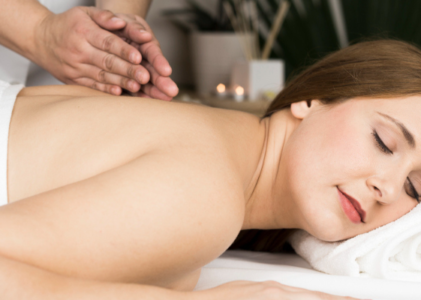When it comes to massages, the Swedish massage is one of the most popular choices. But what exactly is a Swedish massage, and is it characterized by hard or soft pressure? Let’s explore the ins and outs of Swedish massage to answer this common question.
Introduction to Swedish Massage
What is a Swedish massage?
The more superficial layers of muscles are worked on during a Swedish massage, which uses lengthy strokes, kneading, and friction techniques. This massage technique was created in the 19th century by Swedish biologist Per Henrik Ling with the goals of easing tension in the muscles, promoting relaxation, and enhancing circulation. Whether you’re seeking a Swedish massage at a Spa in Chennai or elsewhere, the therapeutic benefits remain consistent.
Understanding Swedish Massage
Swedish massage typically involves a combination of five basic strokes:
- Effleurage: Long, gliding strokes that follow the direction of blood flow towards the heart.
- Petrissage: Kneading and squeezing movements that help release muscle tension.
- Friction: Circular or cross-fiber movements that target deeper layers of muscles and connective tissue.
- Tapotement: Rhythmic tapping or pounding movements that stimulate the muscles.
- Vibration: Fine, rapid shaking or trembling movements that help relax the muscles.
Is a Swedish Massage Hard or Soft?
Although Swedish massage is often synonymous with gentle and soothing techniques, it’s generally categorized as a “soft” massage. The pressure applied during a Swedish massage may fluctuate depending on your preferences and the therapist’s style. Nevertheless, the overarching objective of Swedish massage is to induce relaxation and reduce stress rather than concentrating on deep tissue manipulation. Whether you’re indulging in a Swedish massage at a Spa in Velachery or elsewhere, the primary focus remains on promoting relaxation and enhancing overall well-being.
The Benefits of Swedish Massage
- Relaxation: Swedish massage is well known for its capacity to promote calmness and lower stress levels.
- Improved Circulation: The long, gliding strokes of Swedish massage help improve blood circulation, which can promote better overall health.
- Pain Relief: While Swedish massage may not be as intense as deep tissue massage, it can still help alleviate muscle tension and discomfort.
- Enhanced Flexibility: By targeting superficial muscles and promoting relaxation, Swedish massage can help improve flexibility and range of motion.
Techniques Used in Swedish Massage
The Swedish massage therapist will adjust the techniques used to meet your individual needs and preferences. They might concentrate on specific sore spots or regions of stress while varying the force of the strokes. It’s crucial to communicate with your therapist if you want to guarantee that your massage is effective and customized for you.
Is Swedish Massage Right for You?
Whether Swedish massage is right for you depends on your individual needs and preferences. If you’re looking for a gentle and relaxing massage experience that promotes overall well-being, Swedish massage may be an excellent choice. However, if you prefer deeper pressure or have specific areas of tension that require more intensive treatment, you may benefit more from a different type of massage, such as deep tissue or sports massage. Consider discussing your options with a qualified therapist at a Spa in Anna Nagar to determine the best treatment for you.
Swedish massage is typically characterized by gentle and soothing techniques, making it suitable for individuals seeking relaxation and stress relief. While the pressure applied during a Swedish massage may vary, it is generally considered a “soft” massage compared to deeper tissue work. Whether Swedish massage is right for you depends on your personal preferences and therapeutic needs. If you’re not sure, think about talking to a licensed massage therapist about your options to figure out what kind of treatment might be best for you.
Comments
0 comments

